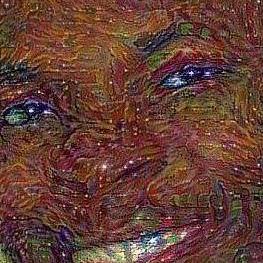PyTorch and rospy interoperability
Table of Contents:
Introduction
Yesterday was mighty nightmarish in the life of this developer. I had trained a conv-net meant to classify an object I was trying to recognize and later on manipulate using vision-based control. Since PYTORCH had tensor computation with strong GPU acceleration and differential backprop capabilities based on the torch auto-grad system, I took advantage of its python compatibility since it would mean I could easily write my control code in rospy or roscpp and publish vision/control topics that reduces interoperability issues when working with different Linux processes. Only that I didn’t anticipate Python 2 and Python 3 module import problems way ahead of time. I would give more background below.
Background
For the record, I run ROS 1.x (indigo bare bones) on a ubuntu 14.04 machine with a 32GB RAM. The pytorch developers encourage users to install Torch with conda and typically use python3 since python 2 will be phased out in the near future. So, I had been using pytorch in a conda environment that both had a python 2 and python 3 environment. I could easily switch environments by turning on or off whichever python version I wanted. For details on how to do this, see this doc from the folks at conda.
So far, everything was working great. For ros applications that does not involve image processing classes such as CvBridge, I was able to get ros and pytorch to talk in python3 despite python3 being unofficially supported for ROS 1.x (see this github wiki). Getting this to work involves pip installing the necessary ros dependencies in python3 using this requirements.txt file. This github repo page shows how I do this.
Anyways, so I trained a conv net model in pytorch, no big deal. I had a roscpp node in running on a different workstation, but within the same ros network broadcasting sensor_msgs/Image RGB images on a designated topic. Given what I know, it should be easy subscribing to the image topic and forwarding the video stream through the pre-trained neural network model to obtain classification results. But boy was I wrong.
Importing torch into rospy
When you install pytorch with conda, it typically places the installation relative to your anaconda install path. For me this was in /home/$USER/anaconda3. So to be able to import Torch and use rospy’s’ CvBridge class simultaneously, I installed the following modules: netifaces, catkin_pkgs and rospkg via pip while in the python3 conda environment. Then I tried to import the convnet model from a different module’s class into a rospy module I had written.
to be able to import
Torchand userospy'sCvBridgesimultaneously, I installed the following modules:netifaces,catkin_pkgsandrospkgviapip
Say convnet.py model had entries like so:
import torch
import torch.nn as nn
class ResNet(object):
def __init__(self, args, **kwargs)
def convModel(self, arg1, arg2):
'''
define some conv models
'''
def forward(self, x):
'''
do stuff with conv layers
'''
return self.fc(prev_layer(x))
and process_images.py file had an import statement like so
from convnet import ResNet
'''
do stuff with imported model
'''
I got weird errors like
>> Python 3.6.0 (default, Oct 26 2016, 20:30:19)
[GCC 4.8.4] on linux2
Type "help", "copyright", "credits" or "license" for more information.
>> No module named Torch
Huh? Country boy comes to town. But the convnet.py model imports Torch okay. I figured the problem must be because I installed pytorch with the python3 version. And so I pulled the python2 version of pytorch from Soumith’s channel.
Now when I import, it says stuff like convnet module xx compiled with a different Torch version. What the heck pytorch?
Solution
At this moment, I stepped out for a walk, and caught a brainchild. What if I do away with the conda build of pytorch and instead install pytorch from source or PyPI?
It turns out that this is the most error-less prone way to import pytorch models into a rospy file or indeed a python2 file. To do this, I temporarily moved my anaconda3 folder out of bash’s native path, pulled the latest pytorch commit from github and then installed with python setup.py install.
Now when I try out the above commands, everything works well.
It turns out that this is the most error-less prone way to import Pytorch models into a rospy file or indeed a python2 file. To do this, I temporarily moved my
anaconda3folder out of bash’s native path, pulled the latest pytorch commit from github and then installed withpython setup.py install.
So my two cents to the robotics community running neural net models in pytorch or tensorflow and using such models in rospy or equivalent environments is to always go for the source installation whenever and if possible. You would save yourself a lot of headache and time-waste.
 Lekan Molu
Lekan Molu